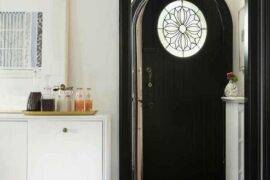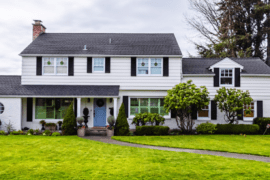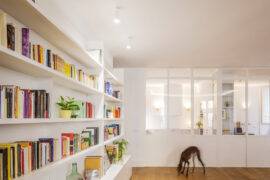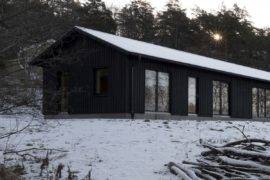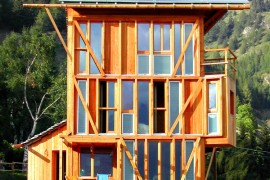In the ever-evolving landscape of home design, certain architectural styles stand as timeless testaments to enduring charm and elegance. Among them, Colonial-style houses exude a unique blend of historical significance and modern adaptability, seamlessly bridging the past with the present. As we embark on a journey through the rich history and contemporary relevance of Colonial architecture, this exploration will unravel the defining characteristics, interior decor secrets, and landscaping nuances that make Colonial-style homes a perennial favorite.
Join us in discovering how these houses, rooted in 17th-century origins, have gracefully evolved to embrace the demands of modern living, all while preserving their innate allure. Whether you’re drawn to the symmetrical facades, the inviting interiors, or the meticulously landscaped gardens, Colonial-style houses offer a captivating narrative that continues to captivate homeowners with its timeless appeal.
Defining Characteristics and Timeless Appeal of Colonial Style House Architecture
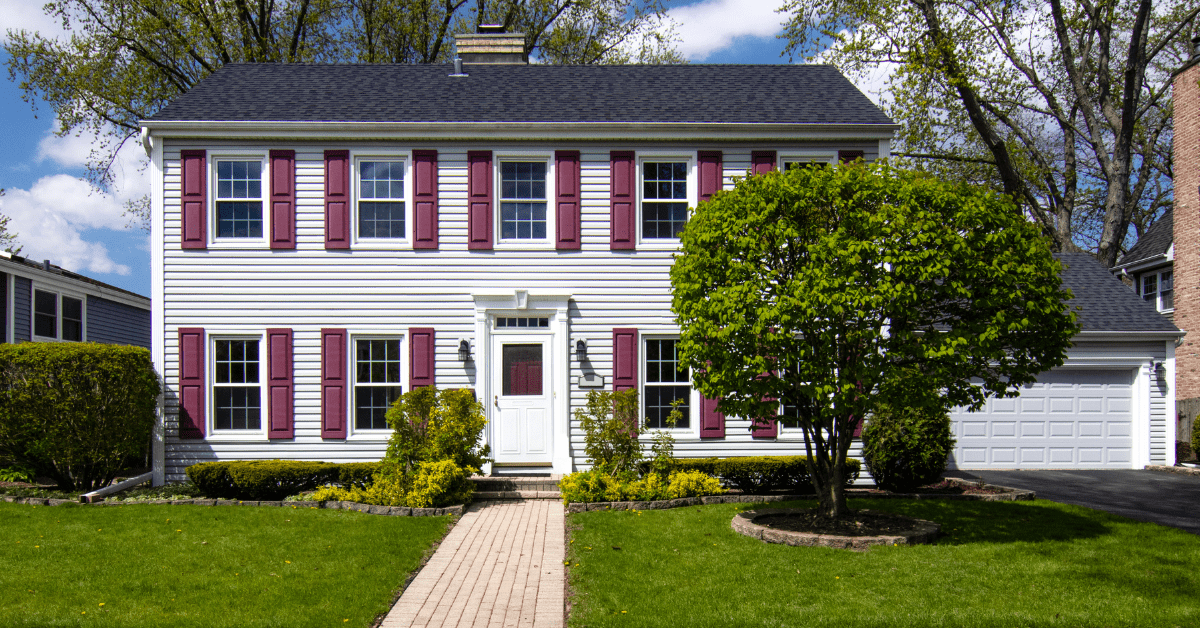
Colonial-style houses stand as architectural treasures, boasting distinct features that have transcended centuries with unwavering grace. These homes, hailing from the early American colonies, exhibit a harmonious blend of practicality, symmetry, and understated elegance. Here are the key characteristics that define Colonial-style house architecture:
- Symmetrical Facades: Colonial homes often showcase symmetrical exteriors, with a centrally located front door flanked by an equal number of windows on either side. This balanced arrangement creates a sense of order and proportionality, contributing to the classic and timeless aesthetic.
- Central Chimney: A prominent central chimney is a hallmark of Colonial-style houses, reflecting the practicality of a shared hearth for multiple rooms. This feature not only served a functional purpose in heating the home but also became a distinctive element of the architecture.
- Gable Roofs: Gable roofs, characterized by their steep slopes and triangular shapes, are a common feature in Colonial-style houses. This roofing style not only adds visual interest but also efficiently sheds snow and rain, showcasing the practical considerations inherent in Colonial design.
- Symmetrical Windows: Windows play a pivotal role in Colonial architecture, maintaining the overall symmetry of the home. Double-hung sash windows with multi-pane grids are prevalent, allowing for an abundance of natural light while adhering to the balanced aesthetic.
- Classic Columns: Colonial homes often boast grand entrances adorned with classic columns, most notably the iconic columns of the Georgian style. These columns, whether Doric, Ionic, or Corinthian, contribute to the stately and formal presence of Colonial facades.
- Subdued Color Palette: Colonial-style houses traditionally feature a subdued color palette, often consisting of whites, creams, or earthy tones. This understated color scheme enhances the timeless and refined quality of the architecture.
- Paneled Doors and Entryways: Entryways are adorned with paneled doors, sometimes featuring a decorative transom window above. This attention to detail adds a touch of sophistication and craftsmanship to the front facade.
- Clapboard Siding: Horizontal clapboard siding is a characteristic exterior feature of Colonial homes, providing a textured and visually appealing surface. This siding not only adds to the charm but also serves as a protective layer against the elements.
In exploring these defining characteristics, it becomes evident that Colonial-style houses transcend mere architectural design; they embody a rich history, an enduring aesthetic, and a commitment to timeless principles.
Creating a Warm and Inviting Atmosphere with Colonial Style House Decor
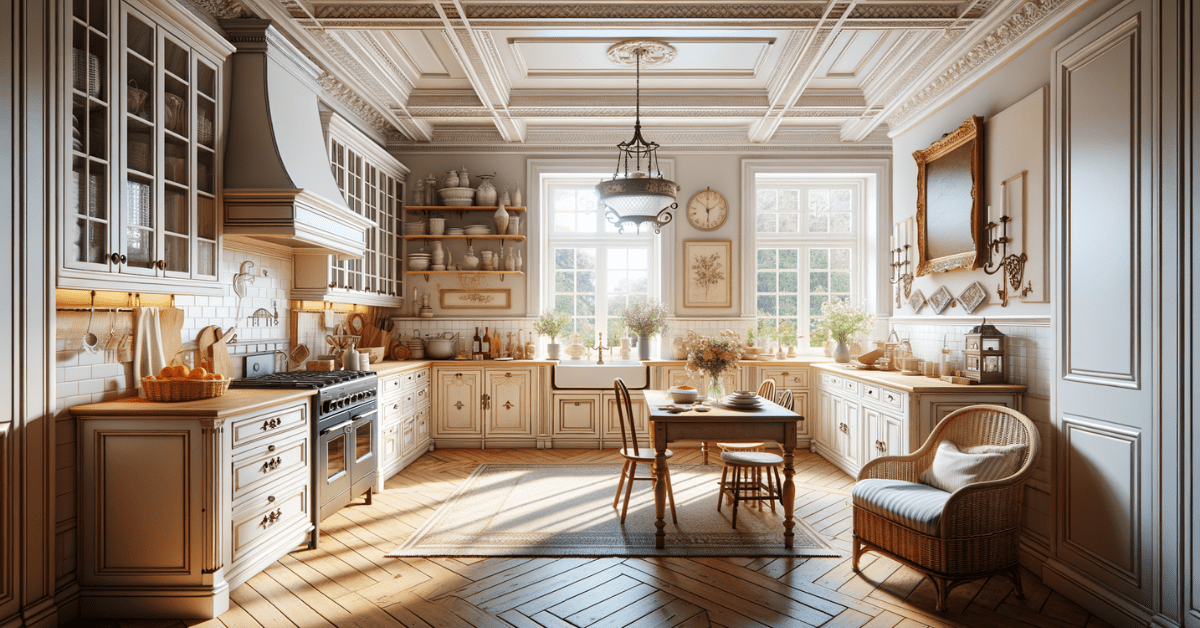
Embracing the charm of a Colonial-style house extends beyond its architectural elements; it delves into the artistry of interior decor, where every furnishing and detail contributes to a warm and inviting atmosphere. Here are key tips for infusing your Colonial home with a timeless and hospitable ambiance:
- Embrace Classic Furnishings: Opt for furnishings that echo the elegance of Colonial design. Think sturdy wooden pieces, such as Windsor chairs, Chippendale sofas, and mahogany tables. These classics not only complement the architectural style but also bring a sense of heritage and authenticity to your interior spaces.
- Incorporate Rich Fabrics: Introduce rich and textured fabrics to add warmth and depth to your Colonial home. Consider upholstering furniture with damask, brocade, or floral prints. Layering these fabrics through curtains, rugs, and throw pillows enhances the cozy and inviting feel of each room.
- Colonial Color Palettes: Stay true to Colonial color palettes by opting for earthy tones, deep reds, muted greens, and soft blues. These colors not only reflect the historical context of Colonial homes but also create a soothing and comforting environment. Use these hues strategically in wall colors, upholstery, and decor accessories.
- Display Colonial-Era Art and Decor: Incorporate art and decor pieces that nod to the Colonial era. Portraits, landscapes, and still-life paintings reminiscent of the 17th and 18th centuries add a touch of nostalgia. Brass candlesticks, porcelain dishware, and pewter accents contribute to the authenticity of the period.
- Focus on Symmetry and Balance: Colonial design is rooted in symmetry and balance. Arrange furniture in pairs, creating a sense of equilibrium in each room. Symmetrical layouts not only pay homage to the architectural principles of Colonial homes but also foster a visually pleasing and harmonious atmosphere.
- Layered Textures: Enhance the tactile experience within your Colonial home by incorporating layered textures. Utilize braided rugs, embroidered textiles, and quilts to add depth and warmth to floors and furnishings. This layering contributes to the overall coziness of the space.
- Showcase Fireplace Features: If your Colonial home includes a fireplace, make it a focal point. Enhance the inviting ambiance by adorning the mantel with Colonial-style decor, such as framed portraits, antique clocks, or pewter candleholders. A crackling fire during colder months adds an extra layer of warmth.
- Utilize Woodwork and Wainscoting: Highlight the architectural details of your home by emphasizing woodwork and wainscoting. Consider incorporating wooden paneling, crown molding, and beamed ceilings. These features not only contribute to the Colonial aesthetic but also create a sense of craftsmanship and character.
Enhancing the Curb Appeal of Your Colonial Style House with Landscaping
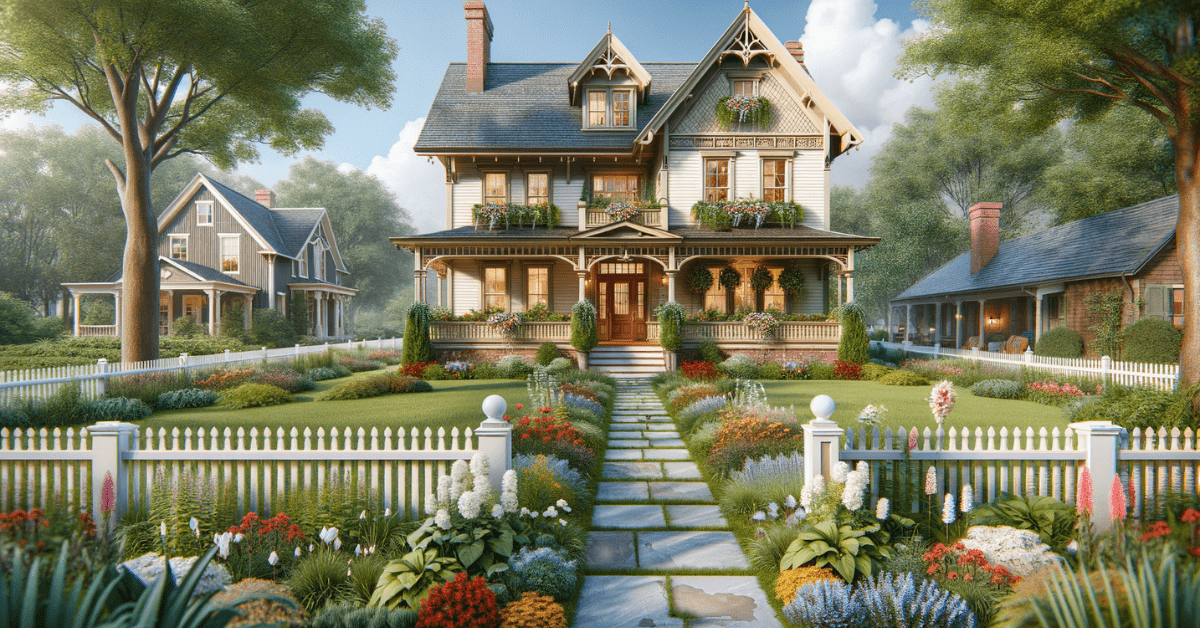
The allure of a Colonial-style house extends beyond its walls to the exterior, where meticulous landscaping plays a pivotal role in creating an enchanting curb appeal. Elevate the visual impact of your home with thoughtful garden and exterior enhancements that seamlessly complement the inherent grace of Colonial architecture:
- Traditional Pathways and Walkways: Create a charming entrance by incorporating traditional pathways and walkways leading to your front door. Opt for materials like brick or stone to evoke a timeless aesthetic. Consider flanking the pathway with manicured shrubs or low hedges for a polished and inviting approach.
- Symmetrical Plantings: Maintain the Colonial emphasis on symmetry by strategically planting matching flora on either side of the entrance. Symmetrical arrangements of flowers, shrubs, or small trees frame the facade, enhancing the overall balance and classic appeal of the home.
- Classic Boxwoods and Hedges: Integrate classic boxwoods and hedges into your landscaping design. These evergreen elements not only contribute to the neat and tidy appearance but also serve as a nod to the well-manicured gardens often associated with Colonial homes.
- Colonial-Inspired Garden Accents: Add distinctive Colonial-inspired accents to your garden, such as wrought-iron benches, antique-style lanterns, or decorative urns. These elements infuse character and historical charm, creating a captivating outdoor ambiance.
- Quaint Flower Gardens: Incorporate flower gardens with a selection of blooms that thrive in your region and align with the Colonial color palette. Consider perennial favorites like roses, peonies, or hydrangeas for a burst of color and fragrance that resonates with the timeless appeal of Colonial gardens.
- Elegant Entryway Landscaping: Pay special attention to the area around your front door. Frame the entryway with potted plants, hanging baskets, or climbing vines. This not only draws attention to the main entrance but also adds a touch of refinement to the Colonial aesthetic.
- Maintain a Neat Lawn: A well-maintained lawn is a crucial component of Colonial curb appeal. Keep the grass trimmed and healthy, and consider incorporating geometric patterns or pathways to enhance visual interest. Neatly defined borders with edging contribute to the overall polished look.
- Consider a Colonial-Style Fence: If appropriate for your property, install a Colonial-style fence to define the boundaries of your front yard. White picket fences or fences with classic designs align seamlessly with the architectural style, adding a sense of privacy and elegance.
- Seasonal Decor Transitions: Update your exterior decor seasonally to reflect the changing landscape. For instance, in the spring and summer, emphasize vibrant flowers, while in the fall, consider decorative pumpkins and autumnal foliage. This adaptive approach ensures your Colonial home remains inviting year-round.
- Well-Defined Edging: Define garden beds and pathways with well-maintained edging. This not only enhances the neatness of the landscaping but also pays homage to the meticulous attention to detail characteristic of Colonial design.
By thoughtfully curating your outdoor space with these landscaping strategies, you breathe life into the exterior of your Colonial-style house.
In the timeless dance between history and modernity, Colonial-style houses emerge as steadfast guardians of architectural elegance and enduring charm. As we conclude our exploration of these iconic homes, it becomes clear that their legacy extends far beyond the confines of their symmetrical facades and classic interiors.
Other articles you might enjoy:
- The Cape Cod House Aesthetic: Coastal Living At Its Best
- Minimalism At Its Best: 20 Cozy Tiny Houses To Explore
- Ranch Style Houses: Classic Charm and Modern Living
Colonial-style houses, rooted in the 17th century, have gracefully evolved through the centuries, adapting to the needs of each era while preserving their intrinsic allure. From the distinctive symmetry of their exteriors to the warm and inviting atmospheres within, every element is a testament to a bygone era’s craftsmanship and attention to detail.
